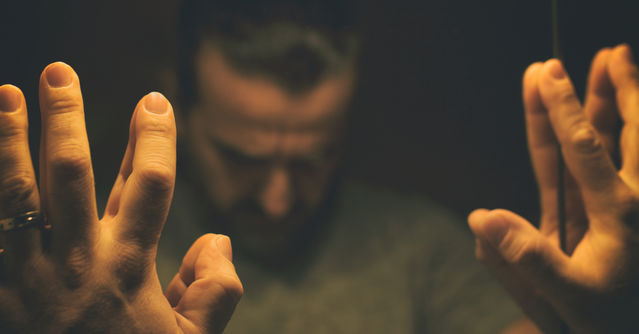Pornography
Are You Ashamed of Your Sexual Turn-Ons?
Porn can reveal elements of arousal that a person might be unaware of.
Posted October 9, 2019 Reviewed by Lybi Ma

Josh, married to Ashley for 12 years, started using porn in his teens. He enjoys it as a sexual outlet, has never kept his usage a secret from Ashley, and has not, until recently, experienced any negative feelings related to his porn use. So what happened? On a whim, Josh started watching videos of transsexual men. He now finds this turns him on. A lot. And he’s trying to understand what that means.
As a sexologist and therapist, I can assure you that Josh’s tale of woe is hardly unusual. In fact, in my clinical work, I’ve heard pretty much every variation of this story that you could imagine (and some you probably can’t imagine). If there is one thing I’ve learned in nearly three decades of this work, it’s that people who come to me because they’re ashamed of the things that turn them on do not need me to pass judgment on them. They’re doing more than enough of that on their own.
I started my clinical practice in the 1990s, shortly before the ubiquitous Internet became a thing. At that time, except for men who were spending half their paychecks on phone sex, technology was not a factor in why clients came to see me. By 2000, that changed. Today, I can’t remember the last time I treated someone who wasn’t in some significant way affected by online sexual content and contacts – especially pornography.
Porn is:
- Exciting. Most people watch porn because it’s sexually exciting. In pornland, there is an unmeasurable level of sexual intensity and arousal – all at the click of a button with no chance of rejection. Users can learn about sex, be sexual without a partner, project themselves into all kinds of sexual fantasy play, and find pixel-sex versions of behaviors not available to them in real life.
- Revelatory. Today, an unlimited supply of porn is available in endless variations. So many users (like Josh) are exposed to and become aroused by behaviors that shock them. Basically, porn reveals elements of their arousal template they were previously unaware of or simply repressed. And once these attractions are revealed, they don’t go away.
Note: Porn does not create arousal where there is none. I’m a gay man married to a man for nearly 20 years, and I was with a lot of men before my husband. I could watch an endless parade of female body parts for months on end, and women would not become part of my sexual arousal template because they’re just not my thing. Porn is a powerful stimulus, but not that powerful. It can’t create arousal from thin air. If I had a latent attraction to women, the story might be different. But I don’t, and porn can’t create that. For porn to reveal a turn-on, that turn-on must already be in the person’s arousal template to some degree, even latently.
So porn is sexually exciting and it can reveal forms of arousal of which we were previously unaware. This occurs relatively often with same-sex attractions, trans attractions, kink, fetishes, and all sorts of other sexual behaviors. Individuals see these activities, and suddenly they know something new about themselves.
What they choose to do with that information depends on the individual.
Many people are grateful for the variety the internet provides. They can explore their sexuality in healthy and fulfilling ways no matter how weird their turn-ons might seem to others. Others, like Josh, spin themselves into sexual shame. In my clinical work, I see these folks relatively regularly. They are turned on by an unusual or unwanted sexual activity and feel shame about it. Often, they wish this part of their sexual arousal template would go away and stay away.
As a therapist, it’s not my job to play into that thinking. Because no amount of talk therapy, aversion therapy, conversion therapy, medication, prayer, or wishful thinking will make that happen. Arousal templates are what they are. It appears that we may be able to add to an arousal template – mostly through intensely arousing experiences (usually sexual in nature, though perhaps in some cases nonsexual in nature) – but we cannot subtract. When the door of sexual arousal is opened, it stays open.
Many such individuals try to slam the door shut (or to ignore that the door is open) by numbing themselves with alcohol or drugs or an emotionally distracting behavior (shopping, gambling, etc.). Sometimes they are in recovery for a substance or behavioral addiction and find themselves continually relapsing over their sexual shame, saying things like, “I stay sober for a while, and then I go online to satisfy this fetish that I wish I didn’t have, and then I feel so ashamed about what I’ve done that I relapse.”
So, if judgment and attempts to change a client’s sexual arousal template are not the answer, what is? When a client says, “The stuff that turns me on makes me sick,” what should a therapist do? The answer is actually simple: The therapist should validate what the client is saying and then work to normalize this aspect of the client’s arousal template (provided the behavior is legal, consensual, and non-harmful to the client or others). It’s OK for clients to be curious, explore, and learn. They don’t have to hate themselves just because a certain behavior turns them on.
Clients who struggle with elements of sexual desire need to know it’s OK to have these attractions. They needn’t act on their desires if they truly don’t want to. But if they do want to act them out, they need to understand that it’s OK and they can find safe and sane ways to engage. Without such validation, these individuals will stay mired in sexual shame, and their risk for depression, anxiety, addiction, and related issues will be high.




